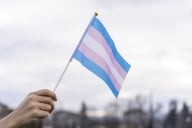You have /5 articles left.
Sign up for a free account or log in.

iStock
I am the youngest and first person in my family to earn a college degree. So when my father kept encouraging me with his favorite phrase, “You are the one who will get her wish,” I wasn’t quite sure what that wish might be. It was probably not to become a college professor, since the image of a professional woman was an elusive one for me. Only television portrayals, my grade school and high school teachers, and few college professors were both women and professionals in my life.
Though he could not have imagined his influence, my late father’s vote of confidence guided me years after he had passed away, and it is the main reason that I encourage my students, family and friends to go for it -- whatever “it” is. Fulfilling your destiny is more about staying motivated to see your vision realized than almost anything else. You can always alter your plan, but you can’t always keep your love for your work alive unless you are motivated.
And discovering what motivates you is a key to success. Most people are motivated by a positive voice, yet negative voices can also spur us into action. For example, in her groundbreaking book Beyond the Double Bind: Women and Leadership, Kathleen Hall Jamieson identifies a number of specific catch-22s women in leadership face. A double bind that Jamieson writes about that insists that women cannot be both feminine and competent -- and then demands that they be feminine first -- is one that I have experienced myself multiple times.
Early in my teaching career, I brought a group of students to a national political convention to see public speaking in action, and a well-known male senator referred to me by saying, “This little lady is passing herself off as a professor! Should we let her in the convention?” Another time, a graduate school official asked me, “Don’t you like being a wife and mother?” when I inquired about a particular program. “How many beauty pageants have you been in?” asked one male colleague, to which I replied, “Probably the same number you’ve been. Life is one big beauty pageant, isn’t it?” I was pleased that I came up with a quick retort, but later the implication of his question stung.
These kinds of seemingly innocent remarks -- maybe even something this colleague thought was a compliment -- do undermine women’s professionalism in the workplace, and the research bears it out. Women who are considered feminine or pretty will be judged incompetent, and women who are competent will be seen as unfeminine. It is benign sexism, to be sure, but undermining nonetheless.
Of course, women must regularly confront many more issues. Another double bind that Jamieson cites, the uterus-brain bind, tells us that women can’t conceive children and ideas at the same time, something that every productive working mother will reject endlessly. Not everyone is like a former administrator who marveled at my proposed ideas when I was eight months pregnant and gave the snappy and positive comment, “You are pregnant with ideas, too!”
And then there is the case of older women in academe. Historically in America, as men age, they are seen as gaining wisdom and power; as women age, we just wrinkle and become superfluous. Indeed, the double binds that I’ve mentioned are just a few of the many challenges that women continue to confront. They must also deal with lower pay, work/life balance, less recognition and many other issues.
Such issues motivated me to begin exploring some of those challenges and how we can begin to deal with them in academe. With my co-author, Angela R. Linse, I enlisted 11 women leaders from campuses all around the country -- public and private, large and small -- to tell their stories, which we then compiled in a just published book, Women in the Academy: Learning From Diverse Career Paths. Their experiences can help raise awareness of the double binds that too many women must grapple with. They can also serve as models for others who are struggling with such double binds.
Raising such awareness and serving as models for others is crucial for women in leadership positions in academe. For example, once a woman gains enough experience to be a leader, she must not be “aged out” and instead valued for her wisdom. If we don’t allow a woman this humanity, the window of opportunity for her to contribute will be limited to her midthirties to midfifties, unless somehow she can stay forever young looking. Thus, women who remain in the public arena well into their seventh and eighth decades do a favor to other older women, because their visual impact shows that women are viable and have as much gravitas as aging men.
I feel hopeful that reading the stories of various academic women in the forthcoming collection of essays will help remove the double binds because they will be shown for what they are: limiting and just plain wrong. Best-selling author Chimamanda Ngozi Adichie warns us of the danger of a single story, and by sharing the varied stories of academic women, it is my vision that we will embrace multiple stories, even if they may come from one woman. Indeed, one woman can experience multiple double binds.
When I interviewed Supreme Court Justice Ruth Bader Ginsburg, she told me that it is not just women’s rights that she has been fighting for -- it is human rights. I share that goal. Over the years, I have encouraged my students to “speak up and speak well,” and these essays reflect that personal commitment on my part and the part of the women in this book who have done just that.
Over the coming months, Inside Higher Ed will feature their stories in “Careers.” We believe that telling those stories will lead to a greater awareness of the issues and encourage people within the academy and in government to make changes. We welcome readers to join in the discussion of how to make higher education a better place for both men and women.




